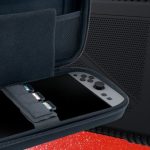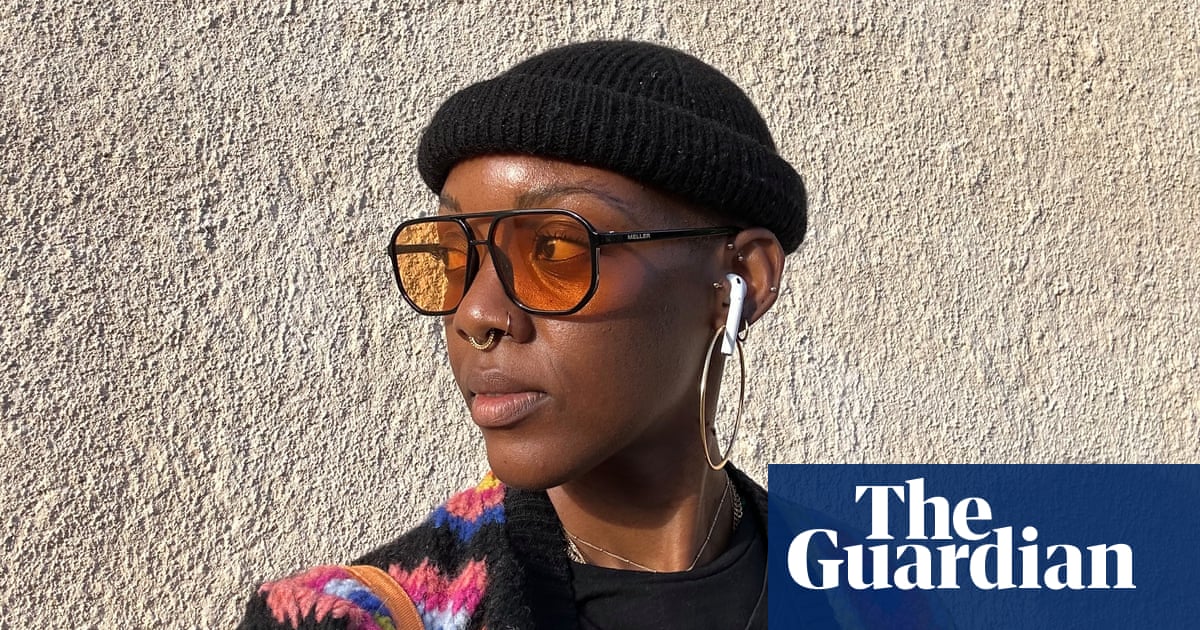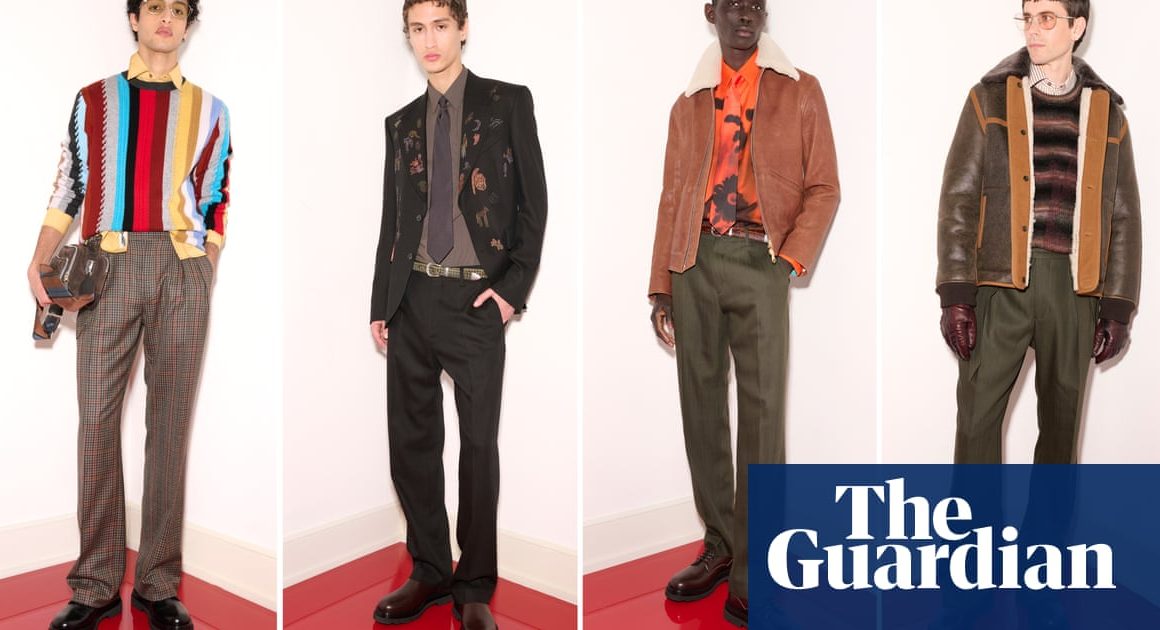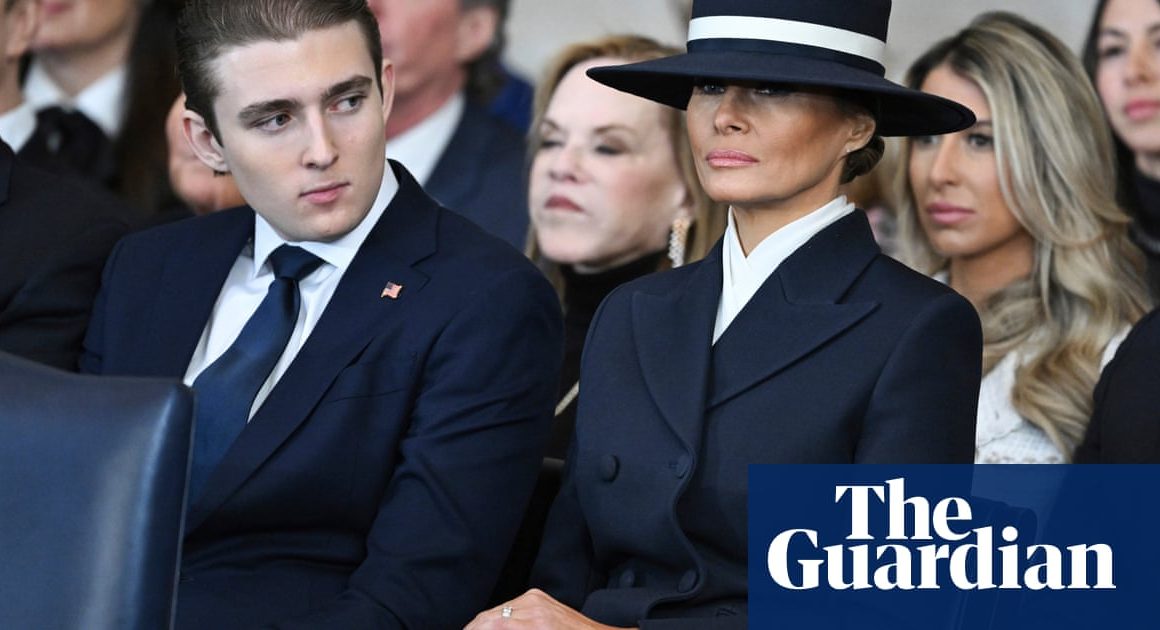As an arctic blast hit the UK this week, most of us turned to our trusty puffer jackets and woolly hats. Others dug out something a little more surprising from their accessories arsenal: a micro beanie.
Worn high across the forehead, these bijou beanies are purposely rolled up by wearers, leaving their ears exposed to the elements. With roots in maritime and military settings – they were originally rolled up to avoid any obstruction to hearing – they are sometimes called fisherman or watch caps. But rather than being worn on the high seas, they are now sported by creative types in offices and coffee shops from London to Lancaster.
“I usually wear mine pretty flat or horizontal,” says Jake McCabe, a creative director based in London who first started wearing micro beanies as a teenager. “It brings a nice balance and silhouette. The exposed ears are really just a symptom of them being rolled up so many times.”
The practice, referred to by this paper as “helixing” (it exposes the part of the ear called the helix), sounds pointless on paper, particularly during a cold snap. But McCabe and others insist the micro beanie still keeps them warm as most of the head is covered.
Unsurprisingly, micro beanies have become an object of ridicule and are frequently memed. “An instant ick,” read numerous comments. “Teenie weenie beanies” were even the subject of a Jimmy Fallon skit featuring Paul Rudd. But if anything the taunting has only enhanced their appeal. In the same way that Perello olives and Daunt Books tote bags have become social style signifiers, the placement of a micro beanie says a lot more about the wearer than simply suggesting they are just having a bad hair day.
The good news is that micro beanies have now gone mainstream. This week, former footballer Ian Wright championed the headgear when he included two versions in his debut hat collection for M&S. The Arsenal legend models the beanies, which come pre-rolled in the lookbook, and they’re described as “exuding understated cool”. Other micro-beanie influencers include Jacques Cousteau, Marvin Gaye, Bill Murray and Tyler, the Creator.
McCabe likes to source vintage versions from the Paris store Brut Clothing. He also has “a beautiful handmade one from Anthony Peto” and one from … the kids’ section of Arket. To achieve the perfect head-to-ear ratio, he prefers to roll his own, avoiding bulking by sticking to “one big roll or two small ones”.
The trend is particularly popular in menswear – almost every look on the GmbH and Hermès catwalks this season were topped off with a micro beanie – but it’s yet to break through in the womenswear market. Digital creator Natasha Muchura blames women’s often longer hair styles for getting in the way. It was only when she got a buzzcut that she started experimenting with beanies. “I would have never thought of wearing these types of beanies when I had hair because I wouldn’t have been able to get the look I wanted,” Muchura says. “Having any hair for me would distract from it. It just falls better without.”
Curiously, Muchura buys her colourful versions from the men’s section of Asos as she has found they have a smaller fit. “It accentuates the shape of my head. It’s also a great way for me to have my ear stack (multiple ear piercings) on display.”
after newsletter promotion
With the arctic blast hanging around, only temperatures will tell if team micro beanie continue to roll with it.
To read the complete version of this newsletter – complete with this week’s trending topics in The Measure and your wardrobe dilemmas solved – subscribe to receive Fashion Statement in your inbox every Thursday.











